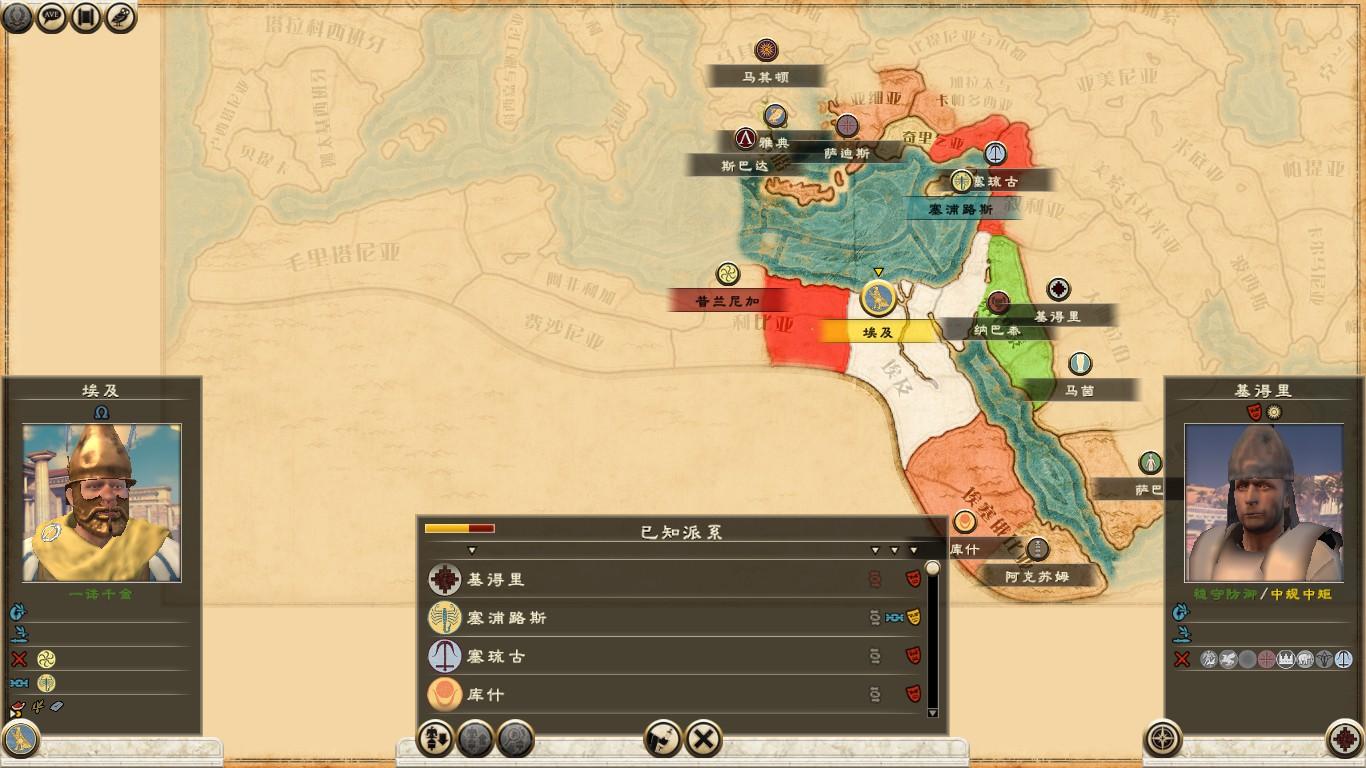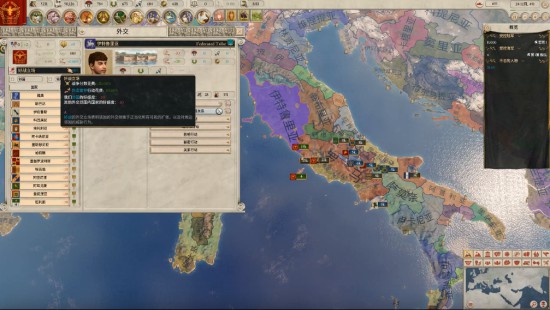Total War: Rome II is a strategy game developed by and published by Sega. The game was released on the platform on September 3, 2013. This is the 8th generation independent game in the Total War series and the sequel to the 3rd generation work "Rome: Total War". The game was a commercial success, surpassing other games in the Total War series in terms of sales and number of players online on the day it was released.
The game is set in Europe during the classical era. Unlike Rome: Total War, which focused almost entirely on the Roman Republic and its politics, Rome II depicts every aspect of that era as accurately and in-depth as possible. civilization. Players take on the role of one of the playable factions in the game, and to win, they must build an empire faster than their enemies. Single player mode begins in 272 BC and continues for over 300 years. However, players can continue playing the game as there is no time victory condition in Rome II.
Table of contents
Game Features New Features
The game's engine, combined with the game's own visual effects and the new unit camera, allow players to focus on individual soldiers on the battlefield. The development team hopes that this way will allow players to view the war from a soldier's perspective. Individual units will use facial animations or behaviors to add elements of horror and realism to the battle, such as the expressions of fear from soldiers who see their comrades being killed and the heroic speeches of their generals before attacking an enemy city.
army
The Army and Navy now have a variety of new postures on the strategic map. These stances were initially only available in a mode called "March", which allowed the army to march further, but also tired the soldiers and reduced their combat effectiveness. "Defensive stance" allows players to build temporary fortresses, and "Ambush stance" allows troops to set traps and conduct ambushes around ambush areas. In Rome II, an army can consist of up to 40 units, including naval and army units, and they must be led by a general. There is also an army limit in Rome II, and factions can increase or decrease the army limit based on their national power at the time. Factions can grow their power by conquering more areas or filling their coffers with gold. The purpose of this system is to make battles more decisive and to make wars between two factions have greater impact. Players also have the ability to rename army units and change their symbols.
When a player recruits a general and begins training his army, that general or army enters muster mode, making it unable to move for that turn. Generals have skills and traits independent of the armies they command. Players can choose their skills as generals level up, and traits are based on the general's experience in the game. Additionally, if an army loses its general the player needs to appoint a new general immediately.
Similar to Total War: Shogun 2, players will be prompted to make decisions. Each decision leads the player to the next specific "decision path" based on the player's previous decisions. These decisions will then affect game development, such as evolving the tiny Roman Republic into the Roman Empire. In addition, compared with previous Total War games where players could only assign traits to generals and family members, players can now assign traits to them through the actual combat experience gained by the legion through years of combat. Players can customize their legions by selecting their weaponry, which means players will still be able to train customized legions, unlike previous Total War series where players had to build an army of all its units separately.
The navy takes on a more important role in Total War: Rome 2, now they can join land battles or sieges, which is reflected in the naval strategy of the classical era of landing invasions with infantry aboard naval warships. The army can attack enemy ground forces or cities, while the navy can provide support or conduct naval battles, and can even capture poorly defended coastal cities on its own. Naval units have become larger in size, so players can recruit a powerful navy in a short period of time. The regional sea zones introduced in Medieval: Total War have been reused to prevent players or automated players from avoiding enemy fleets during invasions. If your own fleet enters the area where the enemy fleet is located, a naval battle will be automatically triggered.
In addition to traditional sieges and land battles, Rome II features a variety of new combat types, including:
Affairs officer

There are three types of stewards in Rome II, nobles, warriors, and spies. Each faction has its own special style of stewards. When each Agent is recruited, they will have a skill set to their environment or civilization. If the Agent is upgraded, players can also invest skill points in the Agent's skill tree. Each agent can assassinate other characters or persuade characters to join their faction. This is to make each agent as useful as possible, but naturally different agents will have different skills, and there are also single types of agents. tasks that can be performed. When a steward is asked to perform a specific task, there is another set of options for how to complete the task. For example, when your own affairs officer is hunted by an enemy affairs officer, you can bribe him, persuade him to switch factions, or kill him to get rid of the pursuit.
culture
The development team tried to ensure the uniqueness of the different cultures and combat units in the game. The game designer stated that in "Rome: Total War" there were "rebels" to represent most of the smaller and unplayable city-states, and now in "Total War: Rome 2" there are a large number of small city-states with their own civilizations. Each nation has its own unique style, for example a British barbarian will look and feel completely different than a disciplined Roman legion, and different civilizations will have different special personnel and technology. There are over 500 different land units in the game, including mercenaries. In addition, "Total War: Rome 2" has introduced more than 30 city maps to avoid every siege feeling the same.
Diplomacy and Politics
The political system in Rome II has been comprehensively improved. Both Rome and Carthage have three political parties competing for power. If players want to choose these two factions to play the game, they can only choose one of them to play. Other factions have only one political party. The political status of different parties is based on their contributions to the country. For example, a certain party's generals occupy more land for the country or a certain politician wins diplomatic victories for the country. If a party's status drops too low, they may no longer be able to influence national affairs, but if a party becomes too powerful, it may force its opponents to unite against it. In some cases, players can attempt to concentrate all power within themselves and become emperor or king, but this requires going through a civil war. Now generals can be either soldiers or politicians, depending on their skills and traits. The diplomacy system has been switched to better artificial intelligence, allowing players to achieve victory through diplomatic means. The development team acknowledged that in previous Total War games automated players would do various unusual things, such as small city-states declaring war on powerful characters, and now the AI will be smarter and more cunning than before. The player's actions will determine whether other automated players view the player as a trustworthy ally or a suspicious traitor.
Maps and regional divisions
The strategic map of Rome II is very vast, extending from Bactria in the east to Iberia in the west; from the Sahara in the south to Caledonia in the north, and is divided into 173 administrative regions and a total of 57 provinces. A province can be composed of up to 4 administrative districts, and can be occupied by multiple factions at the same time, because there are multiple administrative districts in a province and they can be occupied by different factions. However, if the player controls an entire province, they can declare decrees on the province, which can increase taxes or improve public order, etc. There are no longer villages or resource-producing buildings on the Rome II campaign map; they are now all district capital buildings. Each district capital has a standing garrison, the size of which depends on the size of the capital and the type of buildings. Troops can now loot cities, but this reduces local public order. Each province will have a capital. Different from ordinary administrative district capitals, the capital will have city walls and its scale will be relatively large, so siege warfare will only occur in these cities and fortresses.
Playable factions
There are 117 different factions in Rome II: Total War, of which 32 are available in the main campaign (all downloads included). There were 8 playable factions in the initial version of the game, and eventually 14 were playable at no additional cost. The remaining 18 playable factions were available through downloadable packages that were mostly purchased for an additional fee. Each faction has its own unique arms and cultural characteristics. *Note: The playable factions listed here include all download packages
dlc
Like its predecessor Total War: Shogun 2, in addition to the base game, "Rome II: Total War" also has a large number of downloadable packages that require additional payment to add more new factions, troops, campaigns, visual effects and Other game content.
Independent Campaign Pack Culture Pack Plug-in Pack Faction Pack (Free) Review
"Rome II: Total War" has received good reviews from all major electronic media. The game scored 76.67 points and 76 points respectively on the website "Rome II: Total War" and "Rome II: Total War". The latter rated the game as "generally good" on the website. PC Gamer gave the game a score of 85, praising Rome II's cinematic combat and attention to detail, calling the game "stunning". But others in the same review criticized the original version of the game for having flaws. Edge also praised the game's visuals and combat, but also pointed out early issues with the game. Reviews praised Rome II for having numerous units to choose from and its superior sound and visual effects, but criticized the game's unit camera issues. The also praised Rome II's superior visuals, noting that the game's unit diversity allowed all factions in the game to have their own cultural characteristics.

In addition to combat, Game gave the game's campaign map a very high rating and praised the game's new features, but also criticized the waiting time for the AI's turn to be too long. IGN also criticized the round time for being too long. Even though they commented that Rome II is a game worth remembering, there are places where the game makes players suffer unnecessary trouble. Game believes that Rome II is a step back from Total War: Shogun 2, because in Rome II the strength of a country will affect the scale of the war, while in Shogun 2 a small country can also launch a large-scale war. But instead praised Rome II as an excellent sequel.
Sale
As of August 23, 2013, "Rome II: Total War" had seven times more pre-orders than "Total War: Shogun 2", making it the most pre-ordered game in the Total War series.
76/100
8/10
IGN
8.8/10
Chinese Wiki: Defeat the enemy with an entire army: Rome II
Total War series game navigation
Pharaoh

Troy
Warhammer 3
Three Kingdoms
british throne
Warhammer 2
Warhammer

Attila
Rome 2
The Sorrow of the Wu Family
Shogun 2
Napoleon
empire
Medieval 2

Rome
middle Ages
shogun
Derivative works
Heroes
arena
kingdom
general